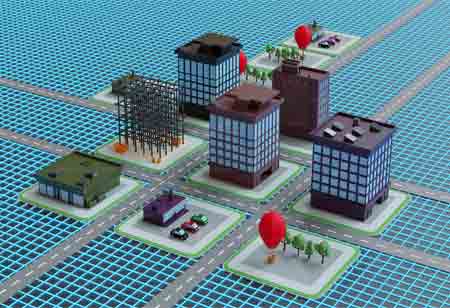Thank you for Subscribing to Gov Business Review Weekly Brief
The Core Concepts of Urban Planning for Future Cities
Land use planning, transit-oriented development, mixed-use development, smart growth, new urbanism, and sustainable urban planning are crucial for a city's growth.

By
Gov Business Review | Thursday, April 24, 2025
Stay ahead of the industry with exclusive feature stories on the top companies, expert insights and the latest news delivered straight to your inbox. Subscribe today.
Land use planning, transit-oriented development, mixed-use development, smart growth, new urbanism, and sustainable urban planning are crucial for a city's growth.
FREMONT, CA: Urban planning is a complex process that governs the development and structure of cities or towns. It utilizes various concepts to create functional, efficient, and sustainable urban settings. This paper highlights major urban planning concepts affecting contemporary development.
One of the basic principles of urban planning is land-use planning. This area allocates parts of a town for various purposes: residential, commercial, industrial, or recreational. Land-use planning ensures land is used according to the city's growth requirements while avoiding conflicting land uses. For example, residential areas are usually kept away from the place of industries to save the residents from excessive noise and air pollution. The concept is crucial when designing a properly balanced and well-organized urban space.
Another central concept is transit-oriented development. TOD deals with designing urban areas around public transportation hubs to enhance the mass transit mode and reduce dependence on private transport. By integrating residential, commercial, and recreational spaces within walking distance of transit stations, TOD will contribute to the use of sustainable transport modes that reduce traffic congestion and lower greenhouse gas emissions. Other than improving accessibility, the result is lively mixed-use communities.
The mixed-use development concept complements TOD in bringing functions together in one building or within the neighborhood. These mixed-use developments combine residential, commercial, and sometimes even industrial spaces into one area, which creates dynamic environments wherein a person can live, work, and play within short distances. This leads to shorter traveling distances, enhanced local economic activities, and lively, interactive urban spaces. It will also help to reduce urban sprawl and make cities more sustainable and efficient.
Smart growth is an urban planning concept that emphasizes sustainable and compact development. It encourages the development of higher densities, setting aside open space, and creating walkable neighborhood structures. This is supposed to slow down urban sprawl, linked to increased traffic congestion, environmental degradation, and inefficient resource use. Smart growth is envisioned to create a more livable and resilient city by promoting environmentally responsible and economically viable development.
New Urbanism is a movement that is reacting to problems from sprawling suburbs and car-centered development. It aims to create livable communities with mixed uses, housing types, and a strong sense of place. In New Urbanism, conventional neighborhood design principles—for example, grid street patterns and public space—are at the core of promoting social interaction and community involvement. This idea tries to capture the same dynamic, personable, lively elements in historic towns and cities.
Such is the holistic idea of sustainable urban planning, which merges the principles of environmental, social, and economic sustainability into urban development. It tries to reduce the ecological footprint through green building, renewable energy sources, and efficient resource use. Sustainable urban planning looks towards better life quality, assured good air and water quality, access to green spaces, and resilient infrastructure.
More in News






